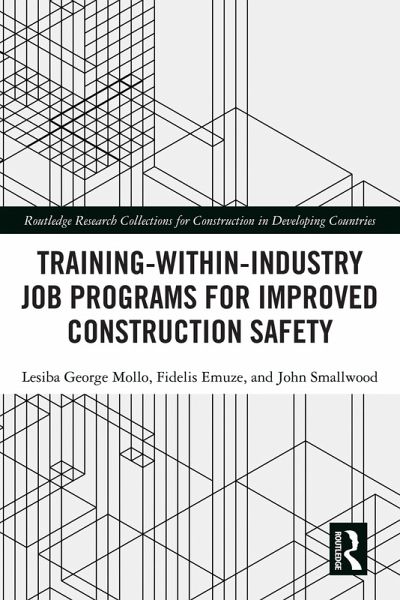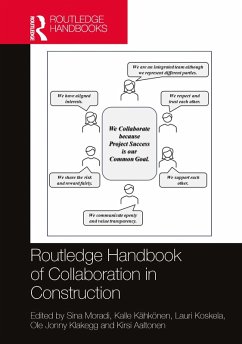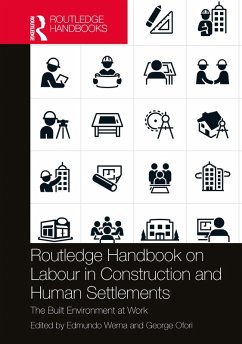
Training-Within-Industry Job Programs for Improved Construction Safety (eBook, PDF)
Versandkostenfrei!
Sofort per Download lieferbar
49,95 €
inkl. MwSt.
Weitere Ausgaben:

PAYBACK Punkte
25 °P sammeln!
The purpose of this book is to demonstrate how a Training-Within-Industry (TWI) Job-Program could reduce human factor-related harm in construction.The construction industry has a significant impact on issues relating to the health, safety, and well-being (HSW) of people in the workforce. It is important to acknowledge that workers' behaviour influences the safety management system (SMS) of construction projects either negatively or positively and that it is important for a management team to identify relevant behaviours and take appropriate action to solve problems. In most cases, accidents ha...
The purpose of this book is to demonstrate how a Training-Within-Industry (TWI) Job-Program could reduce human factor-related harm in construction.
The construction industry has a significant impact on issues relating to the health, safety, and well-being (HSW) of people in the workforce. It is important to acknowledge that workers' behaviour influences the safety management system (SMS) of construction projects either negatively or positively and that it is important for a management team to identify relevant behaviours and take appropriate action to solve problems. In most cases, accidents happen because of the results of human failure in the form of errors, violations and system failures. Human failure causes accidents and site management needs to reduce hazards that might cause such errors, violations and system failures on worksites. The chapters in the book address factors causing human failure on construction sites, how to mitigate errors and violations through SMS and 'learning by doing' and improving practice of using safety instructors on sites. The book closes with insights from a TWI-informed human failure reduction framework.
This book provides valuable insights into safety management in a construction site context that can be applied to other areas. It is essential reading for safety managers, construction managers, researchers, and advanced students.
The construction industry has a significant impact on issues relating to the health, safety, and well-being (HSW) of people in the workforce. It is important to acknowledge that workers' behaviour influences the safety management system (SMS) of construction projects either negatively or positively and that it is important for a management team to identify relevant behaviours and take appropriate action to solve problems. In most cases, accidents happen because of the results of human failure in the form of errors, violations and system failures. Human failure causes accidents and site management needs to reduce hazards that might cause such errors, violations and system failures on worksites. The chapters in the book address factors causing human failure on construction sites, how to mitigate errors and violations through SMS and 'learning by doing' and improving practice of using safety instructors on sites. The book closes with insights from a TWI-informed human failure reduction framework.
This book provides valuable insights into safety management in a construction site context that can be applied to other areas. It is essential reading for safety managers, construction managers, researchers, and advanced students.
Dieser Download kann aus rechtlichen Gründen nur mit Rechnungsadresse in A, B, BG, CY, CZ, D, DK, EW, E, FIN, F, GR, HR, H, IRL, I, LT, L, LR, M, NL, PL, P, R, S, SLO, SK ausgeliefert werden.













